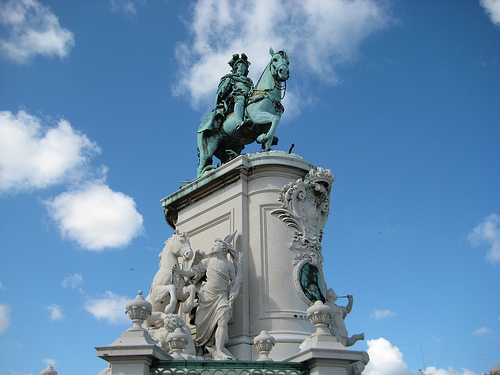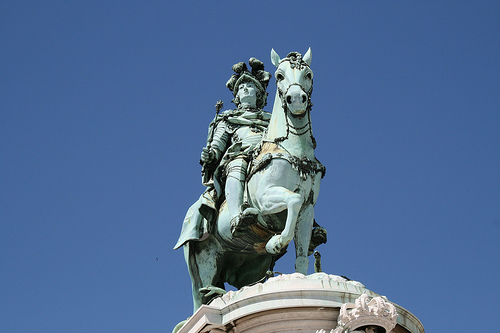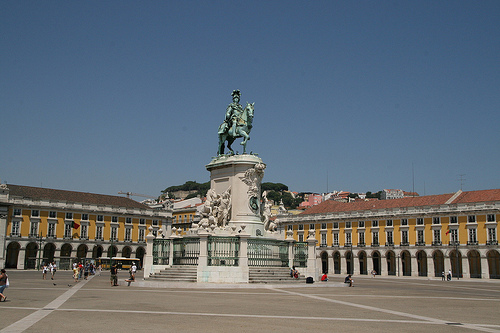All the ways and streets in Lisbon take to the Praca do Comercio (Commercial Square) in Lisbon. And appearing there means coming across one of the largest Lisbon statues — the statue dedicated to Jose I of Portugal. But who was he and why exactly his statue rises there, in the center of the square?

Joseph I or Jose I became the King of Portugal form 175. He ruled and reigned the country until his death in 1777. During his reign the king came to be known as the “Reformer”. Jose I was the son of John V of Portugal and Maria Anna of Austria. Jose I was the third child in the family and he had an elder brother who was to become the King of Portugal, but the latter died when he was only two years old. Other than this brother, Jose I had an older sister — Barbara of Portugal — who got married with Ferdinand VI of Spain and three younger brother.

Before succeeding to the Portuguese throne, Jose I married Infanta Mariana Victoria of Spain in 1729. Among other things, there was one thing the king and the queen both had in common and it was hunting. Opera was another thing Jose I had passion for. The royal couple had four daughters. Besides that, they also had two stillborn sons and a daughter and a miscarriage. After the miscarriage in 1750 Jose no longer believed he would have a son and that is why after becoming the King of Portugal he declared his eldest daughter Maria Francisca his successor. Other than that, she was proclaimed the Princess of Brazil.

Those who have some idea of the history of Lisbon, know that the year 1755 was one of the hardest and most disastrous ones. The Great Lisbon Earthquake occurred and took the lives of many people, razing to the ground the lively city of Lisbon; most of the major sites in Lisbon turned into a pile of stones and the fire following the earthquake left most of buildings in ashes. All this adversely affected the king, who developed severe claustrophobia and could no longer reside in a walled building. As a result, he moved the royal court to Ajuda.
Jose I came to be known in the Portuguese history as Marquis of Pombal. After his death in 1777 his daughter Maria I his eldest daughter who hated him for his violent behavior succeeded him and ended her father’s iron rule.


